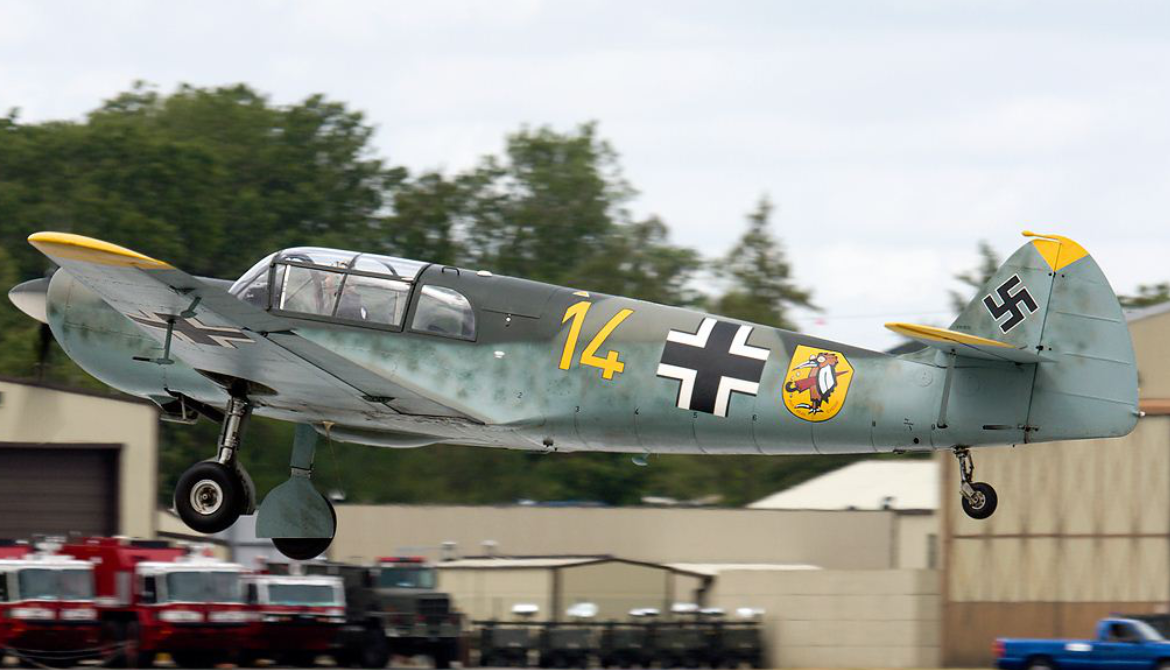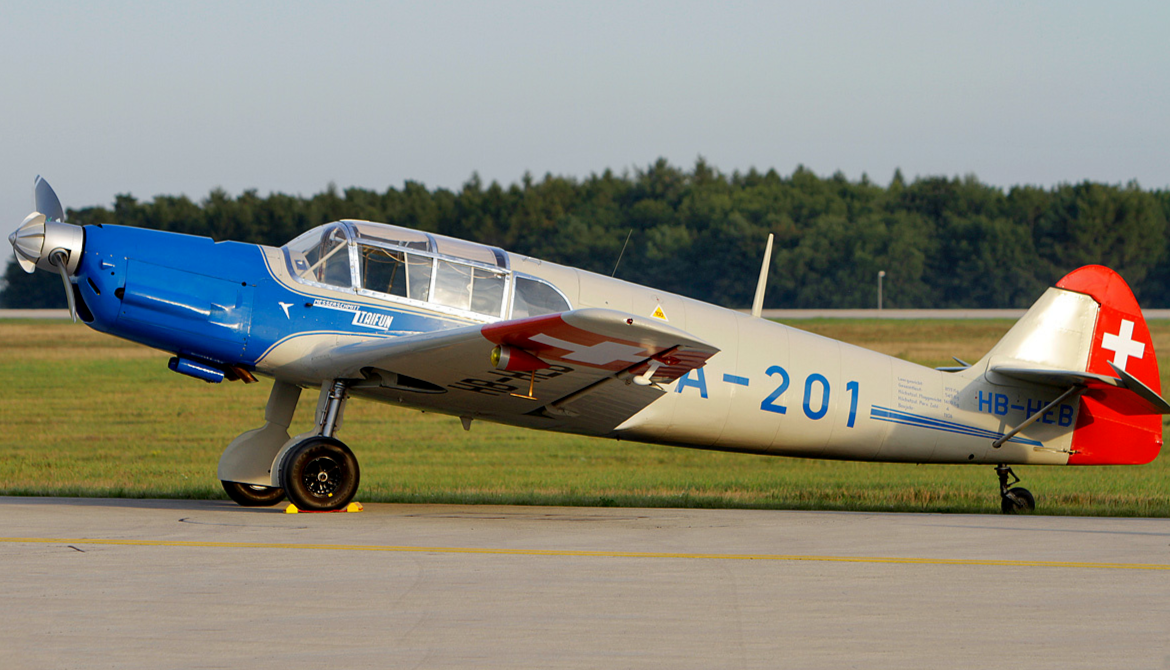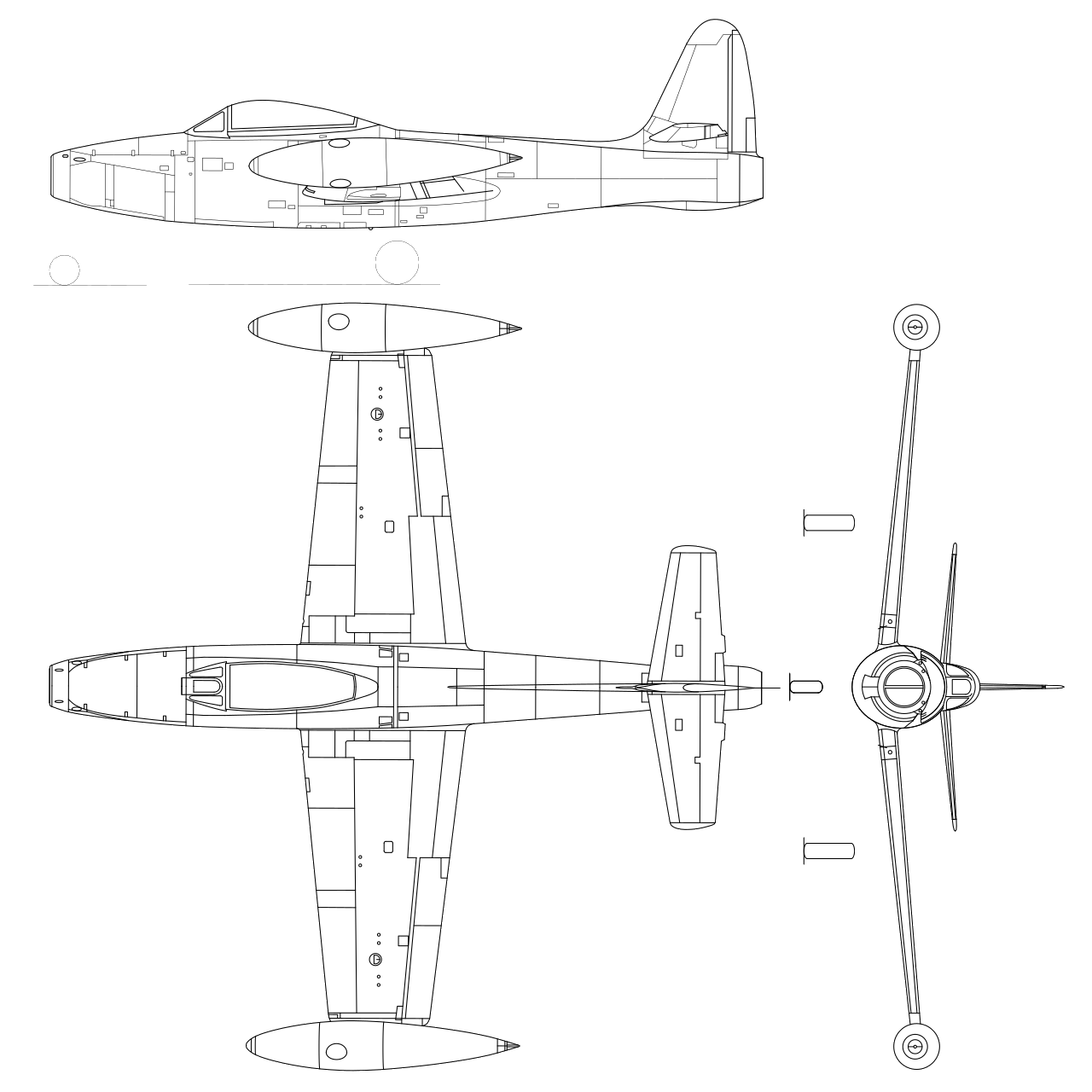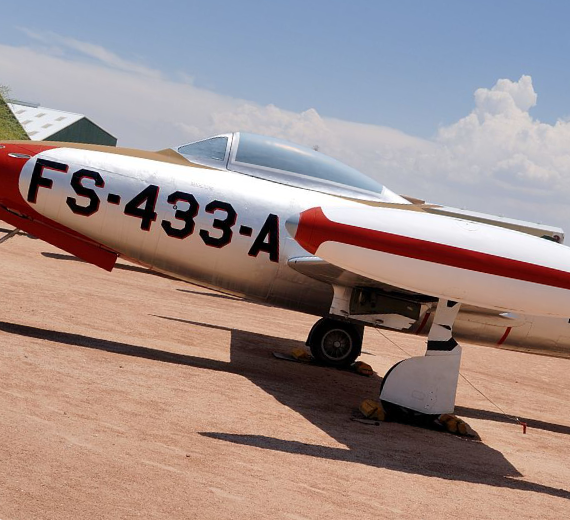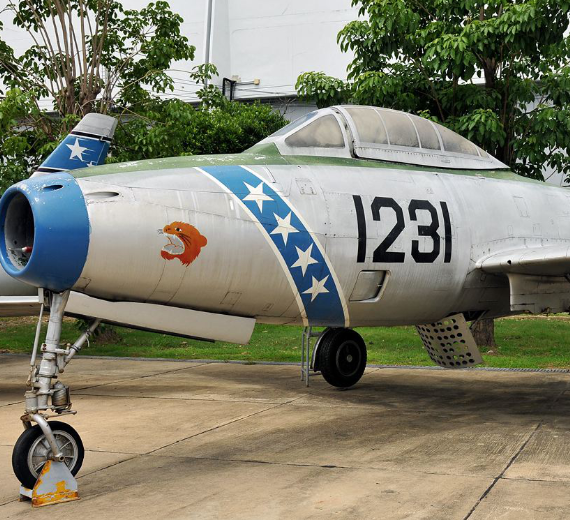Republic Aviation
F-84 Thunderjet
Role Fighter-bomber
Manufacturer Republic Aviation
First flight 28 February 1946
Introduction November 1947
Retired 1964 (USAF)
1974 (Yugoslavia)
Primary user United States Air Force
Number built 7,524
Developed into Republic F-84F Thunderstreak
Republic XF-84H Thunderscreech
Republic XF-91 Thunderceptor
.
History Republic Aviation Corporation.
Republic F-84 Thunderjet
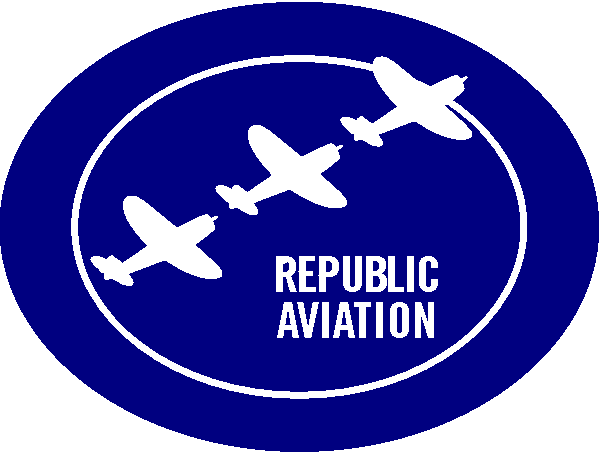
The Republic F-84 Thunderjet was an American turbojet fighter-bomber aircraft. Originating as a 1944 United States Army Air Forces (USAAF) proposal for a "day fighter", the F-84 first flew in 1946. Although it entered service in 1947, the Thunderjet was plagued by so many structural and engine problems that a 1948 U.S. Air Force review declared it unable to execute any aspect of its intended mission and considered canceling the program.
In 1944, Republic Aviation's chief designer, Alexander Kartveli, began working on a turbojet-powered replacement for the P-47 Thunderbolt piston-engined fighter aircraft. The initial attempts to redesign the P-47 to accommodate a jet engine proved futile due to the large cross-section of the Thunderbolt's fuselage. Instead, Kartveli and his team designed a new aircraft with a much-slimmer fuselage housing an axial compressor turbojet engine in the rear fuselage, and an air intake in the nose of the fuselage, with air ducts running from the nose to the engine and taking up much of the fuselage volume. Fuel was mainly stored in tanks in the thick, but laminar flow airfoil, unswept wings
Variants
Straight-wing variants
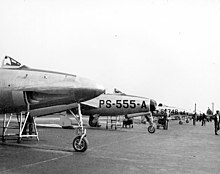
The XP-84A (foreground) and YP-84As - XP-84
- The first two prototypes. Powered by 3,750 lbf (16.7 kN) J-35-GE-7 engine, and armed with four .50 in (12.7mm) machine guns.
- XP-84A
- The third prototype with a more powerful (4,000 lbf (18 kN)) J35-GE-15 engine. This airframe was subsequently modified with a pointed fairing over the intake and lateral NACA intakes were installed into the intake trunks.
- YP-84A
- Service test aircraft with J35-A-15 engines and six guns; 15 built.
- P-84B (F-84B)
- First production version, J35-A-15 engine; 226 built.
- F-84C
- Reverted to the more reliable J35-A-13 engine, improved fuel, hydraulic and electrical systems; 191 built.
- F-84D
- J35-A-17 engine, various structural improvements. The pitot tube was moved from the tail fin to the splitter in the air intake with fins added to the wingtip fuel tanks; 154 built.
- EF-84D
- Two F-84Ds, EF-84D 48-641 and EF-84D 48-661 were modified with wing-tip coupling devices to allow them to link in-flight with the wingtips of a B-29 bomber and extend the range of the fighters. The B-29 and one of the EF-84s were lost in an accident on 24 April 1953, when the F-84s automatic flight controls were activated after link-up.

0
KmCeiling
0
KmCombat RANGE
0
Km/hAircraft Speed
0
Max Crew
Photo Gallery
Republic Aviation Corporation.
Republic F-84 Thunderjet


Republic Aviation Corporation. Originally known as the Seversky Aircraft Company
Republic F-84 Thunderjet
General Info
-
-
- Crew: 1
- Length: 38 ft 1 in (11.61 m)
- Wingspan: 36 ft 5 in (11.10 m)
- Height: 12 ft 7 in (3.84 m)
- Wing area: 260 sq ft (24 m2)
-
Powerplant
-
- Empty weight: 11,095 lb (5,033 kg)
- Gross weight: 18,645 lb (8,457 kg)
- Max takeoff weight: 23,525 lb (10,671 kg)
- Fuel capacity: 450 US gal (1,700 L) internal fuel
- Powerplant: 1 × Allison J35-A-29 turbojet engine, 5,600 lbf (25 kN) thrust
-
Performance
- Maximum speed: 622 mph (1,001 km/h, 541 kn) at sea level
- Cruise speed: 483 mph (777 km/h, 420 kn) at 35,000 ft (11,000 m)
- Range: 670 mi (1,080 km, 580 nmi) (internal fuel)
- Ferry range: 2,000 mi (3,200 km, 1,700 nmi) with external tanks
- Service ceiling: 40,500 ft (12,300 m)
Armament
-
- Guns: 6 × .50 in (12.7 mm) M3 Browning machine guns, 300 rounds per gun
- Rockets: Up to 32 5-inch rockets
- Bombs: 4,000 lb (1,800 kg) bombs, including 1 × Mark 7 nuclear bom
.
Links to Youtube & Others
The Bf 108A first flew in 1934, followed by the Bf 108B in 1935. The Bf 108B used the substantially larger, 12.67 litre displacement Argus As 10 air-cooled inverted V8 engine. The nickname Taifun (German for "typhoon") was given to her own aircraft by Elly Beinhorn, a well-known German pilot, and was generally adopted
Grob G 120 is a
two-seat training
Development of the type continue and in 1935 the Bf 108B appeared with the fin and rudder having undergone modifications.
Youtube Link
Conceived as a competitive aircraft the Bf 108 would take part in the 1936 Berlin Olympics.



